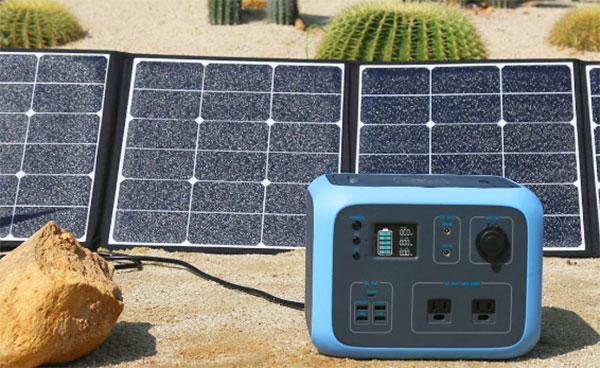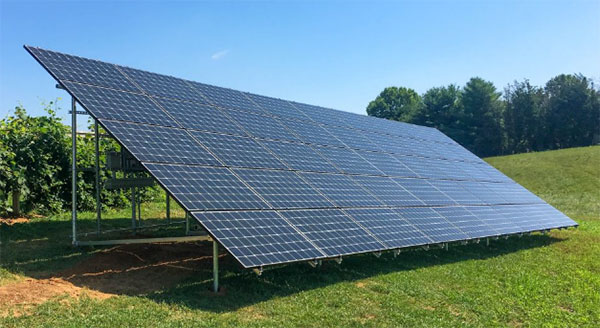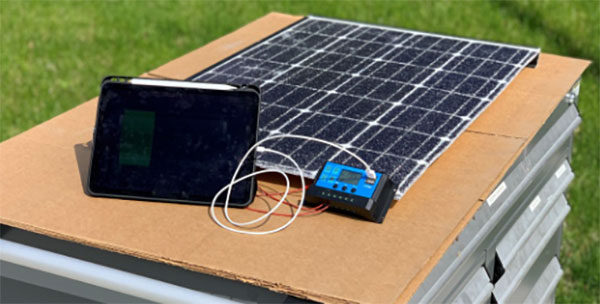Description
The best choice depends on your location, energy needs, budget, and access to the electricity grid.

Overview of On-Grid and Off-Grid Solar Systems
Definition and Basic Functionality
On-Grid Solar Systems are connected to the public electricity grid and can feed excess electricity back to the grid through a process known as net metering. These systems do not require batteries, as the grid acts as a backup when solar panels do not produce enough electricity.
Off-Grid Solar Systems are not connected to the electricity grid and require a battery storage system to store electricity for use during nighttime or cloudy days. They are ideal for remote locations where connecting to the grid is impractical or too expensive.
Key Components of Each System
On-Grid Solar System Components:
- Solar Panels: Convert sunlight into electricity. The average size for residential systems is between 4 kW to 8 kW, with efficiencies ranging from 15% to 22%.
- Grid-Tie Inverter: Converts DC electricity from solar panels into AC electricity, which is compatible with the grid. Inverters typically have an efficiency of 95% to 98%.
- Net Meter: Tracks the energy sent to and received from the grid, essential for net metering policies.
Off-Grid Solar System Components:
- Solar Panels: Similar to on-grid systems, but sizing depends on the total energy requirement and storage capacity.
- Charge Controller: Regulates the voltage and current from the solar panels to the batteries, preventing overcharging. Modern controllers can improve battery life with efficiencies over 95%.
- Batteries: Store excess energy for use when solar production is insufficient. Lithium-ion batteries are popular for their longer lifespan (up to 10 years) and higher efficiency (90-95%) compared to lead-acid batteries.
- Off-Grid Inverter: Converts DC from batteries to AC for household use, with efficiencies similar to grid-tie inverters.
Cost and Budget Considerations:
- On-Grid Systems: Initial installation costs range from $15,000 to $25,000 for a typical residential setup. However, net metering and federal/state incentives can significantly offset these costs over time.
- Off-Grid Systems: More expensive due to additional components like batteries and charge controllers, with costs ranging from $20,000 to $50,000 for a residential setup. The higher initial investment is balanced by the absence of monthly electricity bills.
Advantages and Disadvantages:
- On-Grid Systems offer the advantage of reliability, as the grid can supply electricity when solar panels cannot. However, they are vulnerable to power outages since most systems are designed to shut off for safety during outages.
- Off-Grid Systems provide independence from the utility grid and are essential in areas without grid access. The main disadvantage is the higher initial cost and the need for regular maintenance of batteries.

Comparative Analysis of On-Grid vs. Off-Grid Solar Systems
Initial Installation Costs
The initial installation costs of solar systems vary significantly between on-grid and off-grid setups, primarily due to the different components required for each system.
- On-Grid Solar Systems:
- Average cost: $15,000 to $25,000 for a residential setup.
- Factors influencing cost: Size of the system (measured in kW), type of solar panels, and the inclusion of any state or federal incentives.
- Key Components: Solar panels, grid-tie inverter, mounting hardware, and sometimes a net metering system.
- Installation costs are often offset by rebates, tax credits, and net metering benefits, leading to lower net expenses.
- Off-Grid Solar Systems:
- Average cost: $20,000 to $50,000 for a similar residential setup.
- Factors influencing cost: Includes all on-grid components plus batteries, charge controller, off-grid inverter, and potentially a backup generator.
- Key Components: In addition to on-grid components, batteries (which can be a significant portion of the cost), charge controller, and off-grid inverter are necessary.
- Higher initial costs due to the need for energy storage and more complex system design.
Long-Term Financial Benefits
Both systems offer different financial benefits over the long term, influenced by their operational efficiencies, maintenance costs, and potential income through net metering or saved utility costs.
- On-Grid Solar Systems:
- Electricity Bill Reduction: Significant savings on electricity bills, potentially reducing them to zero in some months.
- Net Metering: Allows for the sale of excess electricity back to the grid, providing additional income or credits.
- Maintenance Costs: Generally lower than off-grid systems, with fewer components to manage.
- System Lifespan and Efficiency: Solar panels guaranteed for 25-30 years, with inverter replacements expected every 10-15 years.
- Off-Grid Solar Systems:
- No Electricity Bills: Complete independence from utility companies, avoiding fluctuating electricity rates.
- Battery Replacement: Additional cost, as batteries typically need replacement every 5-10 years, depending on the type.
- Energy Self-Sufficiency: Ideal for remote locations, ensuring a consistent power supply without reliance on the grid.
- Upfront Investment vs. Long-Term Savings: Although the initial investment is higher, the long-term savings on electricity bills can be substantial.

Energy Efficiency and Production
Performance in Various Climates
Solar panels' performance can significantly vary depending on the climate, impacting overall energy efficiency and production. Here are some key considerations:
- Sunny Climates: Solar panels thrive in sunny conditions, producing more electricity. Efficiency can peak at 22% in optimal conditions, with power output directly correlating to sunlight intensity.
- Cold and Cloudy Climates: Contrary to popular belief, solar panels can perform well in cold climates, as long as there is sufficient sunlight. However, efficiency might drop to 15% on cloudy days, reducing the power output.
- Impact of Temperature: Solar panels lose efficiency as the temperature increases above 25 C (77 F). For every degree above this threshold, panel efficiency decreases by about 0.5%.
- Rain and Snow: Precipitation can actually help clean panels and maintain efficiency, but heavy snowfall can block sunlight, requiring manual clearing to restore production.
Reliability and Energy Storage Solutions
The reliability of solar power systems and their energy storage solutions is crucial for continuous power supply, especially for off-grid systems.
- Battery Storage: The most common solution for storing solar energy, with lithium-ion batteries being the preferred choice due to their longer lifespan (up to 10 years) and higher efficiency (90-95%) compared to lead-acid batteries.
- System Redundancy: Incorporating multiple energy storage systems can increase reliability. For instance, having both battery storage and a backup generator ensures power availability during prolonged cloudy periods or technical failures.
- Maintenance: Regular maintenance is essential for ensuring the longevity and efficiency of solar panels and storage systems. Solar panels require minimal upkeep, mostly cleaning and occasional inspections, while batteries may need more frequent checks and replacements.
- Cost of Storage Solutions: The initial cost of adding battery storage to a solar system can be significant, with prices ranging from $5,000 to $15,000, depending on the system's size and the chosen battery technology.

Maintenance and Operational Considerations
System Durability and Warranty
Solar power systems are designed for durability and long-term operation, with several key aspects influencing their lifespan and reliability:
- Solar Panel Durability: Modern solar panels are built to withstand harsh weather conditions, including heavy rain, snow, and high winds. Most panels are rated to endure wind uplift pressures of up to 2400 Pa and snow loads of up to 5400 Pa.
- Warranty Periods: Manufacturers typically offer a 25 to 30-year performance warranty on solar panels, guaranteeing that panels will produce at least 80% of their rated output by the end of the warranty period.
- Inverter Warranty: The inverter, a critical component of any solar system, usually comes with a shorter warranty period, ranging from 5 to 15 years. However, premium inverters may offer extended warranties up to 20 years.
Repair and Upkeep Requirements
While solar power systems require minimal maintenance, regular checks and occasional repairs are necessary to ensure optimal performance:
- Regular Cleaning: Solar panels should be cleaned periodically to remove dust, bird droppings, and other debris that can reduce efficiency. In most regions, rainfall is sufficient to clean the panels, but in dry, dusty areas, more frequent cleaning may be necessary.
- System Inspections: Annual inspections by a qualified technician can help identify and rectify potential issues before they lead to significant repairs. These checks can include examining the inverter, wiring, and mounting system.
- Battery Maintenance: For off-grid systems, battery upkeep is crucial. Lithium-ion batteries require less maintenance than lead-acid batteries, but both types should be monitored for signs of wear and capacity loss.
- Potential Repair Costs: While solar panel repairs are uncommon, inverter replacements can be a significant expense, with costs ranging from $1,000 to $2,000 for residential systems. Battery replacement costs vary widely, depending on the type and capacity required.

Suitability for Different Locations
Urban and Rural Applications
Solar energy systems offer versatile applications across both urban and rural settings, each with unique benefits and considerations:
- Urban Applications:
- Space Constraints: Urban environments often face space limitations. Rooftop solar panels or building-integrated photovoltaics (BIPV) are effective solutions, utilizing existing structures without requiring additional land.
- Net Metering: Urban areas typically have access to grid-tie systems, allowing homeowners to benefit from net metering policies where excess electricity generated can be sold back to the grid, reducing utility bills.
- Installation Costs: While the cost of solar installation remains relatively consistent, urban areas may benefit more from government incentives, potentially lowering the upfront costs.
- Rural Applications:
- Energy Independence: Off-grid solar systems are particularly beneficial in remote rural areas where grid connectivity is limited or non-existent, providing a reliable and sustainable source of energy.
- Larger Installations: Rural settings often allow for larger solar installations due to more available land, enabling higher energy production to support farming operations or rural businesses.
- Initial Investment: The cost of setting up off-grid systems in rural areas can be higher due to the need for additional components like batteries and charge controllers. However, the long-term benefits of energy autonomy often outweigh these initial expenses.
Geographic and Climatic Limitations
The efficiency and feasibility of solar power systems are significantly influenced by geographic and climatic factors:
- Sunlight Exposure: Regions closer to the equator typically receive more direct sunlight year-round, increasing the potential for solar energy production. Solar installations in these areas can expect higher efficiency and output.
- Climate Variability: Areas with frequent cloud cover, heavy rainfall, or snow may experience reduced solar panel efficiency. Innovative solutions such as adjustable panel mounts and weather-resistant designs help mitigate these challenges.
- Temperature Effects: Solar panels operate most efficiently in cooler temperatures. High temperatures can reduce panel efficiency, impacting overall energy production. Proper installation techniques to ensure ventilation can help alleviate this issue.
- Land Availability: The suitability of solar systems also depends on land availability. In densely populated or forested areas, space constraints may limit the size of solar installations. Conversely, open rural areas can accommodate larger solar farms, maximizing energy production.








